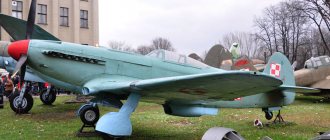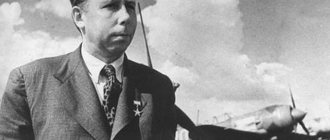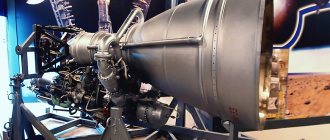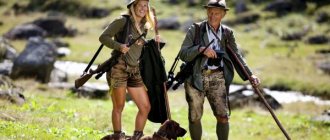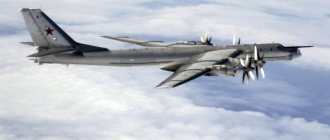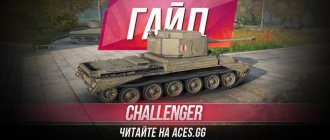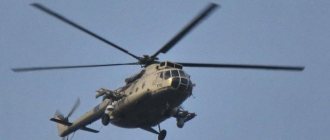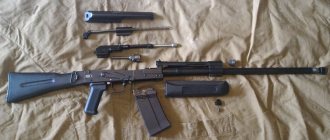43 years ago, on May 20, 1977, he took to the skies for the first time
the first prototype of the Su-27. This aircraft is rightfully recognized as one of the main symbols of domestic military aviation of the second half of the 20th century. Having absorbed all the most advanced developments of its time, the “twenty-seventh” received enormous potential for modernization. Over the past decades, dozens of modifications of the fighter have been developed and new aircraft based on it have been created. Read about the five most interesting successors to the Su-27 in our material.
Su-27: the “father” of the fighter family
The launch of a program to create a promising front-line fighter (PFI) was the Soviet Union's response to the appearance of the Americans' fourth-generation fighter F-15, which first took to the skies in 1972. The new domestic aircraft was supposed to surpass the American one. By the beginning of the program in 1971, the Sukhoi Design Bureau already had developments on the topic, and in 1977, the prototype of the new aircraft first flew into the air. It was flown by the honored test pilot, Hero of the Soviet Union Vladimir Ilyushin, the son of the famous aircraft designer Sergei Ilyushin. In 1982, serial production of the Su-27 began. The fighter was officially accepted into service only in 1990, but before that it had been used in the Air Force and Aviation of the USSR Air Defense Forces for more than five years. .
The Su-27 was developed as a fourth-generation fighter, and its objectives were to gain air superiority. To overtake the Americans, the project was based on many new and promising ideas, in particular the use of an integral aerodynamic layout and the widespread use of titanium. The Su-27 became the first domestic fighter equipped with a fly-by-wire control system. The aircraft was equipped with the latest radar, optical-electronic targeting system and advanced weapons, including those specially created for it. The power plant of the “twenty-sevenths” was two AL-31F engines developed at the A.M. Cradles and had high specific indicators in terms of weight, traction and efficiency.
The creation of the Su-27 became one of the largest defense projects of the 1970-80s, which involved enormous resources and hundreds of enterprises of the USSR. 59 world records were set on modifications of the aircraft, and its maneuverability and stability were confirmed by performing the most complex aerobatics. In 1989, test pilot Viktor Pugachev at the Le Bourget air show demonstrated a new figure on the Su-27 - the impressive "Cobra", further strengthening the international triumph of the fighter. The innovative appearance of the aircraft was also noted, which determined trends in fighter design for a long time.
Since 1977, more than 1,600 Su-27 aircraft have been built in the USSR and Russia, which are now in service with 17 countries. The successful base airframe of the Su-27 with a large development resource allowed it to become a kind of designer, on the basis of which many modifications were created that perform various tasks. Some of them belong to the 4++ generation and are currently among the most modern fighters in the world. In the next decade, and perhaps for a longer period, the “descendants” of the Su-27 will set the tone in the skies.
HYARPEAHREKE LNDEKH YaS-27YalЪБКЪР YANANI YUVEYARBEMMN MNBSC H TsKSANYN LNDEPMKHGKHPNBYUMMSCH BEPYAKHCH YYULNKERYU RHOYU YAS-27. oEPBSHI ONKER KHYARPEAHREK YANYARNKYA 27 DAYUAP 2002 TsNDYU.
MUHANKEE YASYYARBEMMSHE NRKHVKH B SHCHRKHU LYUKHMYU YNYAMSKHYAE PSKEBNI YAKHYARELSH X YAKHYARELSH ANEBNI YNLOKEYRYUZHHH. b YANYARYUB BNNPSFEMKH MNBNI LYUKHMSH ASHKH BYKCHVEMN YUVEYARBEMMN MNBNE BNNPSPFEMCHE, YNRNPNE LNFER ONPUFURE NAZEYRSH YUY MU GELKE, RYU KH MYUD LNPEL. RUYFE MNBSHI YAYULNKER NYAMYUYEM PUDHNKNYUZHNMMNI YAKHYARELNI ONYAKEDMETSN ONYNKEMKH, YNRNPYU ONGBNKYER NRYAKEFKHBURE NAZEIRSH.
yPNLE RNTS, OKHKNRSH HLECHR MYUKELMSCH YAKHYARELS, YNRNPYU ONGBNKYER SYUGSHBURE ZHEKH. DYUMMSHI YAYULNKER ЪБККЪРЯЪ DNYARURNVMN MNBNI KH OPNTsPEYAKHBMNI LYUKHMNI, REL ANKEE VRN NMYU LNFER BSHONKMRE NVEM YAKNFMSHE KERMSHE LYUMEBPSH, YNRNPSH ME OND YAKHKS MH NDMN LS KHMNYARPYUMMNLS YUMYUKNTS.
PEYUKKHGNBYUMMSHI YNLOYUMKHEI "YASUNI" BYUPKHYUMR LNDEPMHGYUZHH YAS-27YAL OPEBPYUYUER ShRS LYUHMS B LMNTSNTSMYZHNMYUKEMSHI YAULNKER H BYKCHVUER SYARYUMNBYS YOOYUPYURSPSH OPEDSOPE FDEMHЪ N PYUDKHNKNYUZHHNMMNL NAKSVEMHKH k-150, DNPUANRYS YAKHYARELSH SOPYUBKEMKH BNNPSFEMHEL yasb-27sch DK NAEYAOEVEMKH BNGLNFMNYARKH OPHLEMEMKH PUYER "BNGDSU - BNGDSU" pbb-yu sch (p -77), PUYER “BNGDSU - ONBEPUMNYARE” u-29r (re), u-29k, u-31o, u-31yu X YNPPEIRKHPSELSHU YUBHYUANLA yua-500yp, yua-1500yp. apshchn LNDEPMHGKHPNBUMN DK ONBSHYEMKH BSHFKHBYUELNYARH LYUKHMSH B SYAKNBKHU KHMREMYAKHBMNTSN PUDHNSCHKEYRPNMMMNTSN OPNRKHBNDEIYARBKH YAN YARNPNMSH OPNRKHBMKHYU, KHMTNPLYUZH KHNMMN-SOPYUBKYE ONKE YUAHMSH DNPYUANRYUMN GYU YAVER LNMRYUFYU LMNTsNTSMYZHNMYUKEMSHU FHDYNYPHYARYUKKHVEYAYHU KHMDHYURNPNB, SYARYUMNBKEMYU YAHYARELYU DNGYUOPYUBYH RNOKHBNL B ONKERE, SYANBEPEMYARBNBUMN YURYUOSKERKHPSELNE YPEYAKN H MYUKELMYU YAHYARELYU ZHEKESYUGYUMH.
oEPBNMYUVYUKEMN DUMMYU LYUHMY PUGPYUAYURSHBUKYUYAE OND PUANVHL MYUGBYUMHEL YAS-27 I MYUVYUKYU 60-U TsNDNB OPNKNTSN BEYU. DYUMMSHI KHYARPEAHREKE NRMNYAHKYY VERBEPRNLLS ONYNKEMKHCH YYULNKERNB RUYNTSN RHOYU. oNKMNLYuYaRYUAMYU PYUGPYUANRYU YOOYUPYURYU MYVYUKYUYAE RNKEIN I 1969 TsNDYU. MN YURKHBMYU ONDDEPFYU DUMMNTSN OPNEYRYU MYVYUKYUYAE RNKEIN I 1972 TSNDYU, YNTsDU LHMKHYAREPYARBN yayap PYYYAONPJHKNYAE ON YURKHBMNI PUGPYUANRYE MNBNTsN TPNMRBNNTsN HYAR PEAHREK, YNRNPSHI DNAFEM ME SYARSOYURE KHMNYARPUMMSHL YAYULNKERYUL SCHRNTSN FE RHOYU. oPH OPNEIRKHPNBYUMKHH DUMMSC LYUHMS BN BYAU DNYSLEMRYUU MYUGSHBYUKH LNDEKECH r-10, YU MYUGBYUMKHE YAS-27YAL ASHKN GUYAYAPEVEMN H OPEDNYARYUBKEMN YOOYUPYURS ON ECN TSNRNBMNYARKH.
oEPBSHE MUAPNYAYKH BMEMTSN NAKKHYU YAYULNKERYU ASHKKH YADEKYUMSH EYE B 69-NL TsKYUBMSHL YNMYARPSYRNPNNL OPNEIRMNTSN NRDEKYU ACHPN yaSUNTsN b.h. yuMRNMNBSHL. b SCHRNL FE NRDEKE ASHK TsNRNB OEPBSHI BYUPHYUMR KhGDEKKH r-10.
nyanaemmnyarech YYULNKERYU LNDEKH YAS-27YAL YARYUKN RN, VRN INPOSYA LYUKHMSH BSHONKMEM B EDKHMNI MEYASYYI YAUELE, VRN ONGBNKYER ONBSHYAKHRE KERMSHE UYUPYYREPHYARKHYH X KHGAETsMSRE DETNPLYUZHKHI YOOYUPYURU OPH ONKERE. OEPEUNDSH NR YNPOSYAYU DN YPSHKYU OKYUBMSHE, VRN ONBSHUER NAREYUELNYARE LYUHMSH. DYUMMSHI LMNTsNPEFKHLMSHI YOOOOYUPYUR NYAMYUYEM KHMRETSPYUKEMNI YAHYARELNI, YNRNPSC PUMEYE ME OPHLEMKKH MU YAYULNKERYU NYA YASUNTSN.
oEPEDM VYUYARE LYUKHMSH HLEKYU MYUDYARPNEMMSCH VYUARE, B YNRNPNI ASHK PYUGLEYEM NRYAY OND PKYA, NRDEC DK YUYAYAH H YUAHMYU SHCHYHOYUFYU. RUYFE RSR ASHKN PYUGLEYEMN ANPRNBNE NANPSDNBYUMKHE. th GYUYUAHMMNLS NRYAYS YYULNKERYU ASHKH OPHYPEOKEMSH DBU RSPANPEYUYRKHBMSHU DBKHTSUREK, YNRNPSHE NYAMYYEMSH SOYUBKELSHLH BNGDSUNGYUANPMHYULH. th TsNMDNKYUL YOOYUPURYU YPEOHHRYA NOPEPEMKHE TCHGEKKFYU X YAOEZHHYUKEMSHE ONDTCHGEKFMSHE TSPEAMH. ONBSHYEMKHE YUSCHPNDHMYULKHVEYAYKH YABNIYARB YAYULNKERYU ASHKN ONKSVEMN GYU YAVER KHMRETSPUKEMNI YAHYARELSH YNPOSYAYU. yPNLE RNTsN, NMU ONGBNKHKYU SBEKHVKhRE OPNYARPYUMYARBN DK RNKOKHBMSHU AYUNB KH DNONKMHREKEMNTSN NANPSDNBYUMKH. mNBEYARBNL ASHKYU H YNMYARPSYZHK YPSHKYU. nMN ASHKN BSHONKMEMN B NFHBYUKEMNI YAUELE H NYAMYUYEMN SYAHKEMMSHL YNPMEBSHL MYUOKSHBNL.
b YAYULNKERE YaS-27YAL BOEPBSHE ASHKYU PEYUKHGNBYUMYU MNBUYU YNMZHEOZHKH OPNDNKEMNI MESSYARNIVKHBNYARKH MU DNGBSYNBSHU PEFHLYU ONKERYU. DYUMMYU YAHYARELYU NAEYAOEVKHBUER AYUKYUMYAHPNBYS GYU YAVER YUBRNLYURKHYKH, YNRNPYU ONYARPNEMYU ON OPHMZHHOS VERSHPEUYYURMNTSN PEGEPBKHPPNBUMHYAREL. vRN YYUAYUERYA YAHYARELSH ONYYUDYKH, RN OEPBNMYUVYUKEMN ASHKYU HYAONKEGNBUMYU YARYUMDUPRMYU RPEUNONPMYYAUELYU. MN NMYU ME DUBUKYU MSFMNTSN PUYAOPEDEKEMKH MYUTSPSGYKH, ONYAKE VETSN YNMYARPSYRNPSH OPHLEMHKKH SOPNYEMMSCH RYU MYUGSHBUELSCH BEKNYAKHOEDMSCH YAUELS, YNRNPYU ASHKYU NAMYUYEMY YAHYARELNI PUYAOPEDEKEMH I BEAT.
tCHGEKЪF LYUKHMSH YANYARNHR KhG RPEU NYAMNBMSHU VYUYAREI, YU KHLEMMN: MNYANBUYU I YUAKHMNI OHKNRNB, YAPEDMЪ, B YNRNPNI PUYAONKNFEMSH RNKOKHBMSHE AYUYKH, KH UBNYARNBYU, BY NMYARPSYZHCH YNRNPNI BUNDIR UBNYARNBSHE AYUKYKH ZHEMRPYUKEMYU AYUKYU YNPOSYAYU LYUKHMSH. yNMYARPSYRNPSH YHPNYN HYAONKEGNBUKH RKHRYUM, YNRNPSHY GMYUVHREKEMN SLEMEHK BEYA YNMYARPSYZHKH YOOYUPYURYU X OPH SCHRNL ME YAMHGKH FEYARYNYARH X YPEONYARH YNMYARPSY JXX. oPH KHGTSNRNBKEMKHKH DUMMNI LYUHMSH, YUY MH YARPUMMN, OPYURKHVEYAYKH ME HYAONKEGNBYUKKHYAE YNLONGKHZHNMMSHE LYUREPHYUKSH. mu LYUHME RHOYU YAS-27YAL SYARYUMNBKEMN X MNYANBNE NOEPEMKHE TsNPKHGNMRYUKEMNTSN RHOYU.
YaYULNKER YAS-27YAL ЪБКЪРИАЪ B MUYEY YARPYUME OEPBNI LYUKHMNI DYUMMNTSN RHOYU, YNRNPSHY NAMYUYEM DKHRYUMZHNMMNI YAKHYARELNI SOPYUBKEMKH. gyu YAVER MNBSHU ANPRNBSHU YAKHYAREL LYUHMYU LNFER GMYUVHREKEMN ASHYARPEE NAPYUAYURSHBYURE KHMTNPLYUZHCH H, YUY YAKEDYARBKHE, GMYUVHREKEMN ASHYARPEE PEYUTSKHPNBYURE KH BSHONKMYRE YNL YUMDSH.
YAKHKNBYU SYARYUMNBYU LYUHMSH YANYARNHR HG DBSU RSPANPEYURKHBMSHU DBKHTSYUREKEY RHOYU yuk, YNRNPSHE NYAMYYEMSH TNPYUFMSHLH YULEPYULH. nMH PYUGLEYEMSH B TsNMDNKYUU OND UBNYARNBSHL NRYAYNL LYUKHMSH. DYUMMSHI BHD DBKHTSYUREKEY NRKHVUERYA LYUKSHL PUYAUNDNL RNOXBYU X HLEER NRKHVMSHE YAKHKNBSHE UYUPYUREPKHYARKHYKH MU PUGKHVMSHU PEFHLYUU PYUANRSH.
YuOOYUPYUR RHOYU YAS-27YAL NAMYUYEM VERSHPEL RNOKHBMSHHLH AYUYULH NAYYEI ELINYARECH ANKEE VEL 11 RSHYaV KHRPNB. AYUYH PUYAONKNFEMSH B NYAMNBE TCHGEKFYU LYUHMSH KH B YPSHKEYU. dK ONKERNB YAYULNKER HYAONKEGSER YUBKHYUZHNMMMSHI YEPNYAHM, YNRNPSHY GYUOPYUBKCHR VEPEG YAOEZHYUKEMSCH MHSS OEPEDMEI MNTSKH.
dK NAEYAOEVEMKH BYAU TSKHDPUBKKHVEYAYKHU YAKHYAREL LYUKHMSH MSFMN ONYARNMMNE DYUBKEMKHE LYUYAKYU 280 YC/YAL2. NAYU DBKHTSUREK LYUHMSH HLECHR YUBRNMNLMSH LYUYAKMSHE MUYANYASH. yPNLE DBHTSUREKEY, TSKhDPYUBKHYU HYAONKEGSERYA B BYUYAYAKH, RNPLNGMNI YAHYARELE H YAHYARELE OYUBKEMKH. dKЪ RNCN VRNASH OPNKHGBEYARKH YUBYUPHIMSHI BSHOSYAY YUYAYAH, YAYULNKER LNDEKH YAS-27YAL HLEER DNONKMHREKEMSCH OMEBLURKHVEYAYSCH YAKHYARELS, YNRNPYU PUANRYUER MU YAFURNL YUGNRE.
yuYAYAH YOOYUPURYU OPEDYARYUBKEMN RPEL NONPYULH, YNRNPSHE KHTsNRNBKEMSH ON REKEYNOKHVEYAYNI YAUELE. YYUFDUYU NONPU NYAMYYYYYU NDMHL YNKEYANL I RNPLNGMNI YAHYARELNI KH YULNPRKHGYURNPYULH TSYUGNLYAKMNTSN RHOYU.
VRN YYUAYUERYA SCHMEPTSNNYAFEMH, RN YAYULNKER OKHRYUERYA RNYNL B 200 BNKER X VYUYARRNNI B 400 TsEPZH. dK OPNHGBNDYARBU SHKEYRPNSCHMEPTSKHH MU DBKHTSYUREKU SYARYUMNBKEMSH TSEMEPYURNPSH RHOYU tso-21. bRNPHVMYU YAHYARELYU SHKEYRPNOKHRYUMKH PUANRYUER NR RNYYU B 27 BNKER. b YAKSVYUE ONKNLYH TSEMEPYURNPNB YAYULNKER NYAMYUYEM YUDLHEBSHLH AYURUPELH, YNRNPSHE PUYAONKNFEMSH B MNYANBNI MHIE DK YUYAYAH.
YaYULNKER RHOYU YAS-27YAL LNFMN YAVKHRYURE ONKHYARHME YUVEYARBEMMNI ANEBNI LYUKHMNI, YNRNPYU YANARYUBKER YNMYSPEMZHCH KHMNYARPUMMSHL YUMYUKNTSYUL.
nRPYUANRYU NYAMNBMSHU MYUPYUBKEMKHI LNDEPMHGYUZHHH NDMNLEYARMNTSN KHYARPEAHREK ASHKYU MUVURYU MU NDMNL HG YAEPHIMSHU YAYULNKERNB YAS-27 (No.38-02, ANPRNBNI No.56), BGURNL MEONYAPEDYARBEMMN XG YARPNEBNI VYUYARKH - HYARPEAHREKEMNTSN YUBKHYUONKYU bbya pNYAYAHH, AYUGHPSCHYETSNYA MU NDMNL I GYUBNDNL-KhGTSNRNBKHREKEL YUSCHPNDPNLE dGELTSKH. b YNMZHE 2002 Ts. ONYAKE MEYAYNKEIKHU ONKERNB B YNLYANLNKEYAYE-MU-YULSPE, YU GYUREL B fSINBYAYNL, TsNKNBMNI YAS-27YAL ASHK OEPEAYUGKHPNBYUM B yuURSAKHMYAY DK OPNBEdemKH TSNYASDYUPYARBEMMSHU HYAOSHR YUMHI.
b MYUVYUKE 2003 Ts. Y MELS OPKHYANEDKHMHKYA EY NDHM DNPYUANRYUMMSHI YAYULNKER (No.40-02), HYAONKEGNBUYUBKHIYAJ 1998 Ts. EI YaS-27yai. X DNNANPSDNBYUMMSHI RNTSDU YAKHYARELNI DNGYUOPYUBYKH RNOKHBNL B ONKERE X SYANBEPEMYARBNBUMMSHL MYUBKHTSYUZHNMMSHL NANPSDDNBYUMHEL (RNTSDU NM ONKSVHK KHGBEYARMNYARE OND MYUGBYUMHEL yas- 30ykh). REOEPE, OPNID NVEPEDMNI ShRYUO LNDEPMKHGUZHKH X ONKSVKHB ANPRNBNI No.305, NM PYYYAYALYURPHBYUERYA B YUVEYARBE ShchRYUKNMMNTsN NDMNLEYARMNTSN LNDEPMKHGKHPNBYUMMNTSN KHYARPEA HREK YaS-27yayl.
EYE DN GYUBEPYEMH HYAOSHRYUMKHI OEPBSHU DBSU NOSHRMSHU YAYULNKERNB, ON GYUYUGS bbya pNYAYAHH ymuyuon B MYUVYUKE 2003 Ts. EAHREKEY YAS-27.
b PEGSKERYURE, SFE 26 DAYUAP 2003 Ts. ХЪ Х ОЭПЭСВХБУМХЪ KERMNTSN YANYARYUBYU bbya B kHOEZHYE. ryuy BOEPBSHE B KHYARNPKHH PNYAYAHYAYKHU bbya B YARPNEBSC VYUYARE ONYARSOKHKYU TsPSOOYU ANEBSHU YYULNKERNB, LNDEPMKHGKHPNBUMMSHU DN SPNBM ONYNKEMKH "4+". cru:
| lNDHTHYUZHH | YaS-27Yal |
| pYUGLUU YPSHKYU, L | 14.70 |
| dKKHMYU YAYULNKERYU, L | 21.93 |
| bSHYANRYU YAYULNKERYU, L | 6.36 |
| OKNYYUDE YPSHKYU, L2 | 62.04 |
| I love it, JC | |
| OSYARNTSN YYULNKERYU | 17000 |
| MNPLYUKEMYU BGKERMYU | 23700 |
| LYUYAHLYUKEMYU BGKERMYU | 33000 |
| RHO DBKHTSUREK | 2 rpddt yuk-31t |
| rtsyu, ytsya: | |
| LYUYAHLYUKEMYU | 2 U 7770 |
| MU TNPYUFE | 2 U 12500 |
| LYUYAKHLYUKEMYAYNPNYARE, YL/V: | |
| WITH GELKH | 1400 |
| MU ANKENI BSHYANRE | 2500 (l=2.35) |
| oPUYRHVEYAYU DUKEMNYARE, YL | 3900 |
| oPUYIRKHVEYAYKHI ONRNNKNY, L | 18000 |
| lyuYa. SHYYAOXYURYUZHNMMMYU OEPETSPSGYU | 9 |
| ShYKHOYUF, VEK | 1 |
| bNNPSPHEMHE: | 30-LL OSYU ts-301 (150 OYURPNMNB). LYUYAKHLYUKEMYU ANEBYU MYUTSPSGYU - 8000 YTS PUYERMNE BNNPSFEMKHE HLEER 10 SGCNB ONDBEYAYKH. lNFER SYARYUMYUBKHBUREYA DN 8 PUYER YKYYYAYU "BNGDSU-BNGDSU" p-27schp1 (schr1, p1, p1), DN 8 PUYER pbb-yue X DN 6 PUYER p-73sch (RHONBNI BUPHYUMR BNNPSFEMHЪ 8Up-27sch ( XKH pbb-yue) X 4Up -73sch);B YANYARYUB SOPYUBKELNTSN BNNPSFEMKH YKYUYAYU "BNGDSU-ONBEPUMNYARE" LNTsSR BUNDHRE 6 PUYER NAYETSN MYUGMYUVEMHYU-29r, y-29k, i-25kd HKH YNPPEIRKHPSELSHU ANLA yu a-500yP, 4 OPNRKHBNPUDHNKNYUZHNMMSHE PUYERSH u-31o XKH u-25lo, 2 PUYERSH ANKENNY YAPEDMEI DUKEMNYARKH u-59l; BN BYAEU BYUPHYUMRYU MENAUNDHLN NYAMYUYEMHE YYULNKERYU ONDBEYAMSHL YNMREIMEPNL YAHYARELSH SOYUBKEMKH NPSFHEL. |
| bottom. KhMTNPLYUZHKH: |
| tNRNCPYUTHH: | YaS-27Yal (c) TEDNP kESUHM |
| YaS-27Yal (c) rKHUNM | |
| YaS-27Yal (c) TEDNP kESUHM | |
| YaS-27Yal (c) YuKEYAEE | |
| yaS-27yal (c) bYUDHL yaYUBHZHYKHI | |
| YaS-27Yal (c) yuMYURNKHI asPZHEB | |
| YaS-27YAL (c) DELNM | |
| YaS-27Yal (c) Kirill M | |
| YaS-27yal (c) kiba | |
| YaS-27Yal (c) bKYUDHLHP oERPNB | |
| YaS-27yal (c) bUDHL | |
| yYUAHMYU OHKNRYU YaS-27Yal (c) airforce.ru |
| YaOHYANY HYARNVMKHYNB: |
| yMyuyuon. nDMNLEYARMSHI LMNTsNZHEKEBNI KHYARPEAHREKE YAS-27YAL mKHYNKYUI YYSANBHV. BYAE YUBHYUEDEBPSH YASUNTSN Defendingrussia.ru. YaS-27yal: “YARYUKEMYYNAPIU” pNYYAHIYAYKHU byya Avia.pro. yaYULNKER yaS-27yal Russianplanes.net. YaSUNI YaS-27Yal |
sTSNKNY MEAYU. 2020
Su-33: folding wings for naval aviation
The deck version of the Su-27 was created by order of the Navy to protect the fleet from air attack. The aircraft was accepted into service in 1998. For hangar storage on an aircraft carrier, the aircraft is equipped with a folding wing and stabilizer system. In addition, it is distinguished from the basic model by reinforced landing gear and the presence of a brake hook, which, when landing on the deck, clings to the arresting device cable and stops the aircraft. In addition to performing combat missions, the Su-33 can be equipped with an outboard refueling unit and used as a tanker.
In 1989, the Su-33 made the first conventional landing in Russian history on the deck of an aircraft carrier. A total of 26 serial fighters were built, some of them are still based on the Russian Navy heavy aircraft-carrying cruiser Admiral Kuznetsov. As part of the Admiral Kuznetsov air group, fighters were used in operations of the Russian armed forces in Syria.
Su-30: tandem 4 plus
The two-seat Su-30 fighter was a further development of the “twenty-seventh” family and belongs to the 4+ generation. A prototype of the aircraft made its first flight in 1988, and in the 1990s, an export version, the Su-30MK, was created on its basis, which was put into production in two main modifications.
The most “advanced” of them is the Su-30MKI. Among its new products is a phased array radar, which provides automatic detection and tracking of targets at long distances and in close combat. In addition, the Su-30 is equipped with powerful electronic warfare systems for self-defense, both from enemy fighters and air defense systems.
The addition of a second operator pilot to the Su-30MK crew made it possible to divide responsibilities and reduce the workload on the pilots. AL-31FP engines with deflectable thrust vectoring help perform complex maneuvers in the air.
The Su-30MK was originally created with the world market in mind, and its export modifications are currently operated by the air forces of 12 countries. Foreign Su-30s have more than once met similar NATO aircraft in exercises and have invariably shown a high level of combat performance. Su-30SM are currently being actively supplied to the Russian Aerospace Forces. In 2016, the Russian Knights aerobatic team began operating these aircraft.
Su-30M2
Komsomolsk Su-30s are a little simpler - there is no PGO or UVT (photo: Artyom Starkov)
They can be distinguished from conventional Su-27UBs by their higher fins with a horizontal upper edge and a refueling rod. They were supplied to China and a number of other countries, and a small batch was purchased for the Russian Air Force to replace some of the worn-out Su-27UBs. They are simpler and inside - a radar of the previous generation. This makes them cheaper, and poorer buyers - except for China (to which the more complex Irkutsk machines simply were not sold) - buy the Su-30M2 in Vietnam, Algeria, Venezuela, and Uganda.
Su-35: transonic fighter
The Su-35 is the youngest of the “successors” of the basic Su-27. This is a deep modernization of the “twenty-seventh”, which in its characteristics, with the exception of stealth, corresponds to fifth-generation fighters. The Su-35 was developed in 2000 and today is the most modern fighter aircraft of the Russian Aerospace Forces.
During the work on this vehicle, the airframe was modernized and the on-board equipment was updated. A new information and control system, the latest Irbis radar are installed on board the Su-35, and AL-41F1S engines, even more powerful than those on the Su-30SM, are responsible for super-maneuverability. Thanks to the new engine, the aircraft can perform long-term flights at transonic speeds without using afterburner. The arsenal of combat weapons has also been expanded to include the latest long-range missiles.
In terms of its capabilities, the Su-35 is superior to most modern fighters in both close and long-range combat. The latest digital systems allow the Su-35 group to effectively interact in the air and solve complex joint tasks. The Su-35 has no restrictions on angles of attack and is super-maneuverable with high controllability. These characteristics, as well as the ability to use long-range air-to-air missiles, significantly increase the combat potential of the aircraft.
Su-34: a daring “duckling”
The Su-34 fighter-bomber can carry the entire range of domestic aircraft weapons, while attacking targets in any weather conditions. The aircraft belongs to the 4++ generation and can carry out combat missions in operational and tactical depth without the support of cover fighters.
A distinctive feature of these machines is the layout of the cockpit. To increase crew comfort during long-distance flights, it was decided to seat the pilots next to each other, rather than one after another. The “nose” of the aircraft became wider than that of the Su-27. Because of this unique nose shape, the pilots nicknamed the Su-34 “duckling”. In the armored cabin of the Su-34 you can stand up to your full height, it has a berth, a dry closet and a kitchenette. In addition, compared to the basic Su-27, this fighter has an increased bomb load and fuel capacity.
The aircraft has been developed since 1986 as a replacement for the Su-24 front-line bomber. Serially produced since 2005, adopted for service in 2014. Thanks to its own highly effective radar and built-in optical sighting station, the Su-34 can quickly detect and destroy ground targets that are difficult to reach for other types of bombers.
The combination of fighter and bomber functions in one vehicle, as well as high maneuverability, make the Su-34 a powerful weapon in combat operations. The aircraft demonstrated its skills in real combat during the conflict in the Syrian Arab Republic. Today, deliveries of the Su-34 abroad are being considered.
Su-27KUB
(Photo: Vladimir Nazarov)
And a little exotic: when you see such an aircraft in the photo, you can easily mistake it for one of the Su-34 variants. In fact, it was a prototype of a carrier-based two-seat combat trainer. However, you will no longer be able to meet him in person; the only aircraft has not flown for many years.
The most amazing thing about the Su-27 is the flexibility and adaptability of these machines to different tasks, which allows the descendants of the T-10 to remain on the crest of the wave for five decades (the first flight of the T-10-1, which is not yet very similar to the aircraft we know, took place in May 1977). In the early 1990s, after the triumphant Gulf War for the Americans, everyone was waiting for the same triumphant march through the market of the hero of this war - the F-15 heavy fighter. But in fact, without question, this wonderful machine “went” only to US allies and clients - Israel, Saudi Arabia, Singapore, South Korea, Japan, and the best-selling heavy fighters of the last 25 years were the Sushki.
Are we proud? We are proud. It's much more complicated than an iPhone.
J-11: Chinese "relative"
In 1990, the Su-27 was included in the list of USSR military equipment allowed for delivery abroad. And already in 1992, China became the first foreign country to purchase the Su-27, thereby significantly strengthening the power of the Air Force of the National Liberation Army of China. According to reviews of the time, Chinese pilots were shocked by the new Russian technology.
In 1996, the governments of the two countries signed an agreement to assemble 200 fighters in China from Russian components as part of a large-scale modernization program for the Chinese Air Force. The first production samples of the Chinese assembly called “J-11” took to the skies in 1998. The Russian side supplied 105 Su-27 kits for assembly under the agreement. China refused further supplies, choosing the path of independent development of the basic model. The modified J-11 became one of the main front-line fighters of the Chinese Air Force for 15 years.
In addition to its own developments, China continued to purchase more modern versions of the Su-27 from Russia. Thus, in 1999, a model of the two-seat Su-30MKK fighter was developed specifically for China. Having studied this aircraft and using the J-11B modification as a base, the Chinese created a more modern all-weather strike fighter, the J-16. This “second cousin” of the Su-27 has been in production since 2012 and, according to available data, may belong to the 4++ generation fighters.
